It's not wise to overlook the means to an end
Page 38
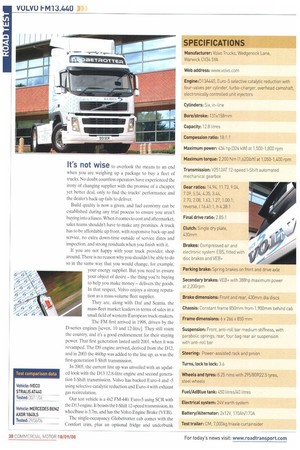
Page 39
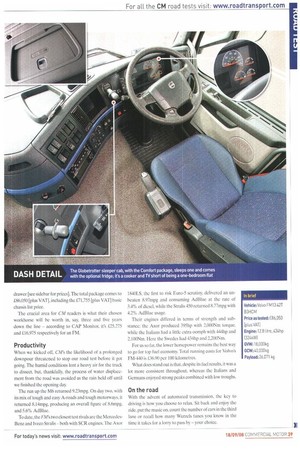
Page 40
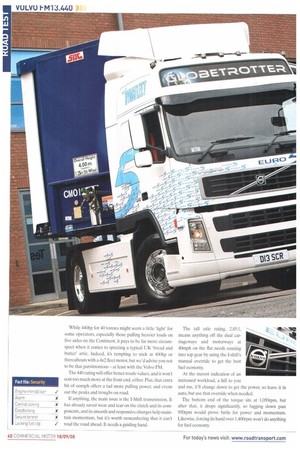
Page 41
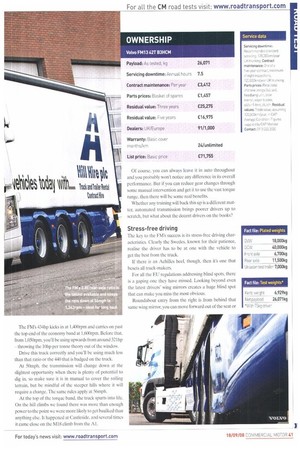
Page 42
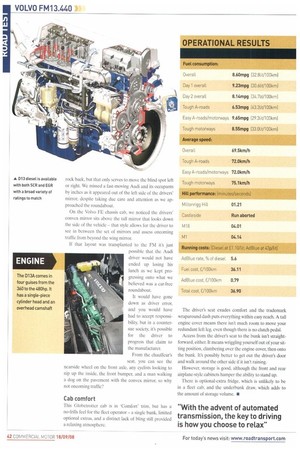
If you've noticed an error in this article please click here to report it so we can fix it.
when you are weighing up a package to buy a fleet of trucks. No doubt countless operators have experienced the irony of changing supplier with the promise of a cheaper, yet better deal, only to find the trucks' performance and the dealer's back-up fails to deliver.
Build quality is now a given, and fuel economy can be established during any trial process to ensure you aren't buying into a fiasco. When it comes to cost and aftermarket, sales teams shouldn't have to make any promises. A truck has to be affordable up front, with responsive back-up and service, no extra down-time outside of service dates and inspection, and strong residuals when you finish with it.
If you are not happy with your truck provider, shop around. There is no reason why you shouldn't be able to do so in the same way that you would change, for example, your energy supplier. But you need to ensure your object of desire — the thing you're buying to help you make money — delivers the goods. In that respect. Volvo enjoys a strong reputation as a mass-volume fleet supplier.
They are, along with Daf and Scimia, the mass-fleet market leaders in terms of sales in a small field of western-European truck-makers.
The FM first arrived in 1998, driven by the D-series engines [seven, 10 and 12-litre]. They still roam the country, and it's a good endorsement for their staying power. That first generation lasted until 2001, when it was revamped. The D9 engine arrived, derived from the D12, and in 2003 the 460hp was added to the line up, as was the first-generation 1-Shift transmission.
In 2005, the current line up was unveiled with an updated look with the D13 12.8-litre engine and second generation I-Shift transmission. Volvo has backed Euro-4 and -5 using selective catalytic reduction and Euro-4 with exhaust gas recirculation.
Our test vehicle is a 4x2 FM-440, Euro-5 using SCR with the D13 engine. It boasts the I-Shift 12-speed transmission. its wheelbase is 3.7m, and has the Volvo Engine Brake (VEB).
The single-occupancy Globetrotter cab comes with the Comfort trim, plus an optional fridge and underbunk drawer [see sidebar for prices]. The total package comes to 186,050 [plus VAT], including the £71,755 [plus VAT] basic chassis list price.
The crucial area for CM readers is what their chosen workhorse will be worth in, say, three and five years down the line — according to CAP Monitor, it's £25275 and £16,975 respectively for an FM.
Productivity When we kicked off, CM's the likelihood of a prolonged downpour threatened to stop our road test before it got going. The humid conditions lent a heavy air for the truck to dissect, but, thankfully, the process of water displacement from the road was avoided as the rain held off until we finished the opening day.
The run up the M6 returned 9.23mpg. On day two, with its mix of tough and easy A-roads and tough motorways, it returned 8.14mpg, producing an overall figure of 8.6mpg, and 5.6% AdBlue.
To date, the FM's two closest test rivals are the MercedesBenz and Iveco Stralis — both with SCR engines. The Axor 1840LS, the first to risk Euro-5 scrutiny, delivered an unbeaten 8.97mpg and consuming AdBlue at the rate of 3.4% of diesel, while the Stralis 450 returned 837mpg with 4.2% AdBlue usage.
Their engines differed in terms of strength and substance; the Axor produced 395hp with 2,000Nm torque, while the Italians had a little extra oomph with 444hp and 2,100Nm. Here the Swedes had 434hp and 2,200Nm.
For us so far, the lower horsepower remains the best way to go for top fuel economy. Total running costs for Volvo's FM-440 is £36.90 per 100 kilometres.
What does stand out is that, despite its fuel results, it was a lot more consistent throughout, whereas the Italians and Germans enjoyed strong peaks combined with low troughs.
On the road
With the advent of automated transmission, the key to driving is how you choose to relax. Sit back and enjoy the ride, put the music on. count the number of cars in the third lane or recall how many Wurzels tunes you know in the time it takes for a lorry to pass by — your choice. While 440hp for 40 tonnes might seem a little 'light' for some operators, especially those pulling heavier loads on five axles on the Continent, it pays to be far more circumspect when it comes to spec.cing a typical UK 'bread and butter' artic. Indeed, it's tempting to stick at 400hp or thereabouts with a 4x2 fleet motor, but we'd advise you not to be that parsimonious — at least with the Volvo FM.
The 440 rating will offer better resale values, and it won't cost too much more at the front end. either. Plus, that extra bit of oomph offers a tad more pulling power, and evens out the peaks and troughs on road.
If anything, the main issue is the I-Shift transmission. It has already saved wear and tear on the clutch and its components, and its smooth and responsive changes help maintain momentum, but it's worth remembering that it can't read the road ahead. It needs a guiding hand. The tall axle rating, 2.85:1, means anything off the dual carriageways and motorways at 40mph on the flat needs coaxing into top gear by using the I-shift's manual override to get the best fuel economy.
At the merest indication of an increased workload, a hill to you and me, it'll change down to get the power, so leave it in auto, hut use that override when needed.
The bottom end of the torque sits at 1,050rpm, but after that, it drops significantly, so lugging down past 950rpm would prove futile for power and momentum. Likewise, forcing its hand over 1,400rpm won't do anything for fuel economy. The FM's 434hp kicks in at 1,400rpm and carries on past the top end of the economy hand at 1.600rpm. Before that, from 1,050rpm, you'll be using upwards from around 321hp throwing the 10hp per tonne theory out of the window, Drive this truck correctly and you'll be using much less than that ratio or the 440 that is badged on the truck.
At 50mph. the transmission will change down at the slightest opportunity when there is plenty of potential to dig in, so make sure it is in manual to cover the rolling terrain, but be mindful of the steeper hills where it will require a change. The same rules apply at 56mph.
At the top of the torque band, the truck spurts into life. On the hill climbs we found there was more than enough power to the point we were more likely to get baulked than anything else. It happened at Castleside, and several times it came close on the M18 climb from the Al. Of course, you can always leave it in auto throughout and you probably won't notice any difference in its overall performance. But if you can reduce gear changes through some manual intervention and get it to use the vast torque range. then there will be some real benefits.
Whether any training will back this up is a different matter, automated transmission brings poorer drivers up to scratch, but what about the decent drivers on the books?
Stress-free driving
The key to the FM's success is its stress-free driving characteristics. Clearly the Swedes, known for their patience, realise the driver has to be at one with the vehicle to get the best from the truck.
If there is an Achilles heel, though, then it's one that besets all truck-makers.
For all the Ell regulations addressing blind spots, there is a gaping one they have missed. Looking beyond even the latest drivers' wing mirrors creates a huge blind spot that can make you miss the most obvious.
Roundabout entry from the right is from behind that same wing mirror, you can move forward out of the seat or rock back, but that only serves to move the blind spot left or right. We missed a fast-moving Audi and its occupants by inches as it appeared out of the left side of the drivers' mirror, despite taking due care and attention as we approached the roundabout.
On the Volvo FE chassis cab, we noticed the drivers' convex mirror sits above the tall mirror that looks down the side of the vehicle — that style allows for the driver to see in between the set of mirrors and assess oncoming traffic from beyond the wing mirror.
If that layout was transplanted to the FM it's just possible that the Audi driver would not have ended up losing his lunch as we kept progressing onto what we believed was a car-free roundabout.
It would have gone down as driver error. and you would have had to accept responsibility. but in a countersue society, it's possible for the driver to progress that claim to the manufacturer.
From the chauffeur's seat, you can see the nearside wheel on the front axle, any cyclists looking to nip up the inside, the front bumper, and a man walking a dog on the pavement with the convex mirror, so why not oncoming traffic?
Cab comfort This Globetrotter cab is in 'Comfort' trim, but has a no-frills feel for the fleet operator — a single bunk, limited optional extras, and a distinct lack of bling still provided a relaxing atmosphere. The driver's seat exudes comfort and the trademark wraparound dash puts everything within easy reach. A tall engine cover means there isn't much room to move your redundant left leg. even though there is no clutch pedal.
Access from the driver's seat to the bunk isn't straightforward, either. It means wriggling yourself out of your sitting position, clambering over the engine cover, then onto the bunk. It's possibly better to get out the driver's door and walk around the other side if it isn't raining.
However, storage is good, although the front and rear airplane-style cabinets hamper the ability to stand up.
There is optional-extra fridge, which is unlikely to be in a fleet cab, and the underbunk draw, which adds to the amount of storage volume. •












































































































































































